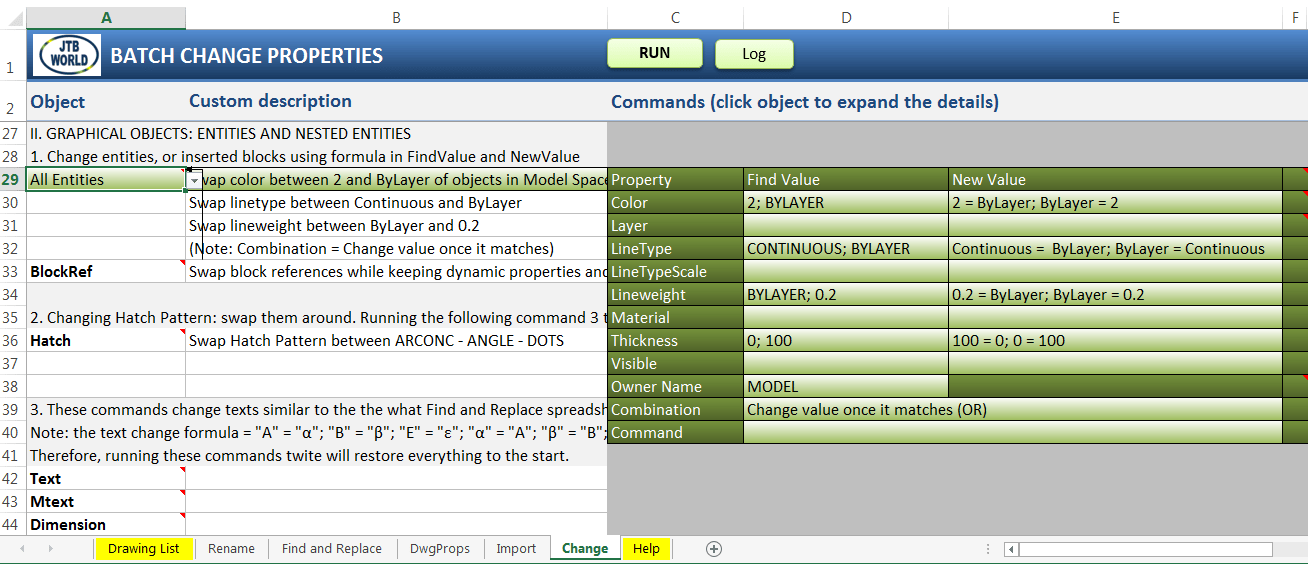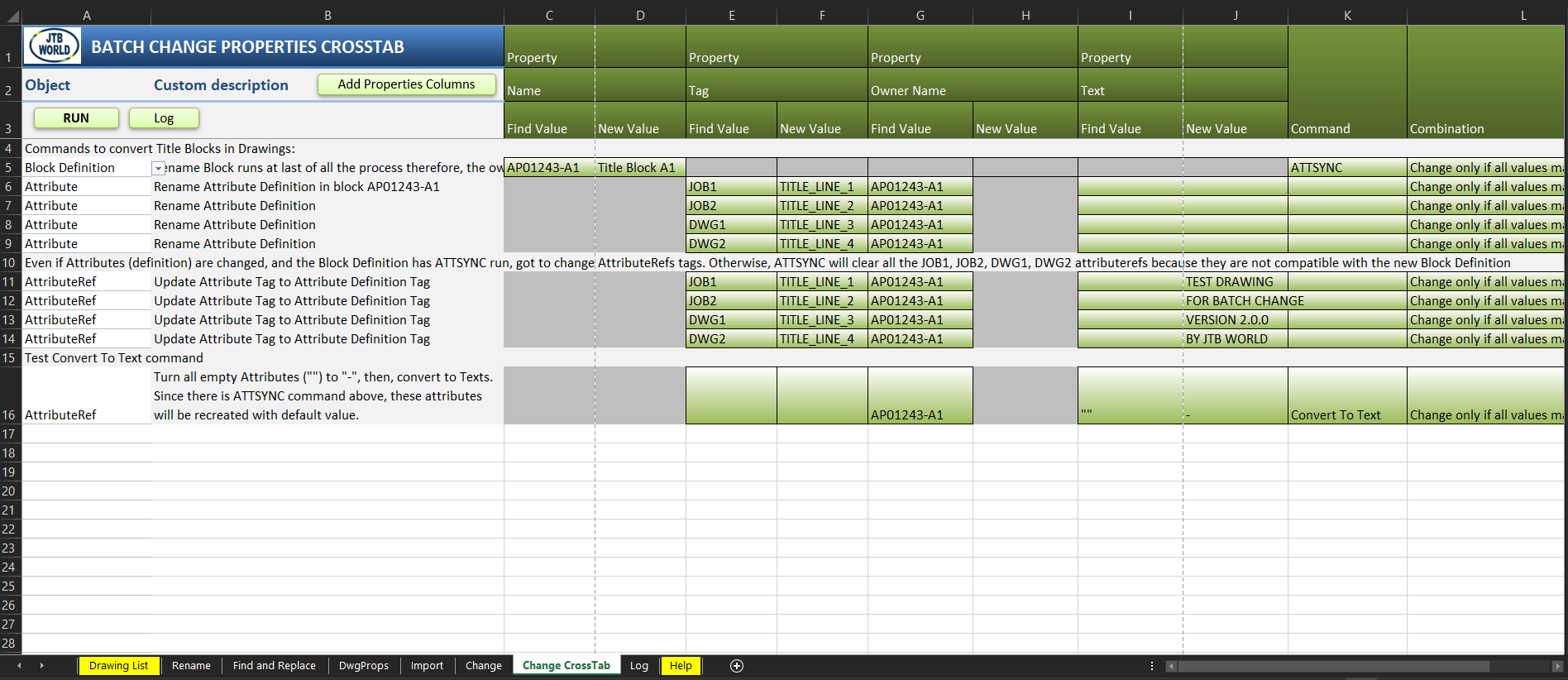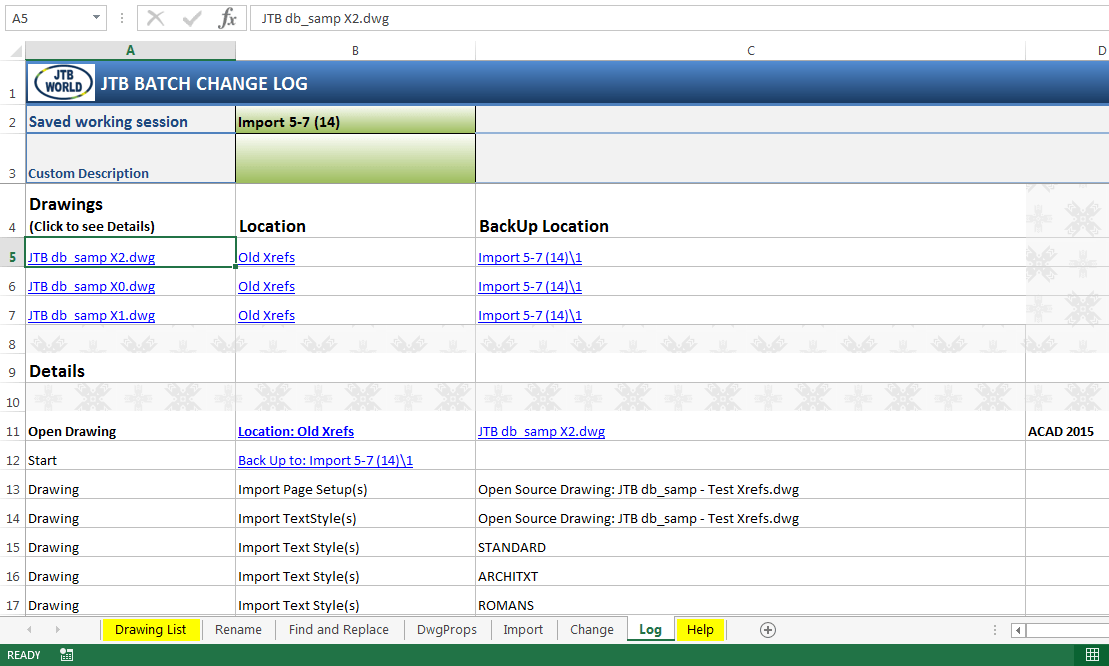In AutoCAD, objects can be put in 2 groups: Named object and graphical object.
Graphical objects are also called Entities. They are line, arc, circle, text etc. They are visible.
Named objects are definitions like Layer, TextStyle. A name object can have none, or one, or many references. References are graphical objects.
Commands on named objects can affect not only the named object, but also its reference entities. Here are common commands:
In "JTB Batch Change Example.xlsx" workbook, each sheet contains many examples and instructions of how it work.
Here, we only show some special cases:
Tip: In Help sheet, there are more instruction about how to use the text find and replace formula "ApplyTextStringFormula". It worths to take a look when you want to run more advance text change functions.
A change command in Batch Change has 3 main parts:
New value (for specific property): once object matches Find Value, the Batch Change will apply New Value to it.
New Value is non-case sensitive too except when working with Text Content of Text, Mtext, Dimension and Table.
New value can be:
Note:
For example: New value = "ARCH-" = "AAA-"; "CONC" = "C" will rename "ARCH-FURN" layer to "AAA-FURN", and "TAG-CONC" layer to "TAG-C"

Example of formulas in Change spreadsheet

Example of converting Title Blocks in Change CrossTab sheet - JTB Batch Change Example.xlam
Normally 1 object has many properties. Each property has its own Find Value and New Value (except ReadOnly property, like IsDynamicBlock, will have no New Value). To access full properties of an object, use "Change" spreadsheet. Other spreadsheets are design for a specific property or specific group of properties only.
When working with the "Change" spreadsheet, the object is matched those Find Values. Cause Find Value results can be many, you can choose combination type in Combination box.There are 2 options:

Each running session, a backup folder is created. All your drawings will be copied to subfolders in that backup folder.
To find your old drawing, click "Log" command. Log worksheet will be activate. Select your working session in cell B2. All backed up drawings will be listed. Find your drawing there and click to link at Backup Location column.
You can also have your custom description of each running session via this Log spreadsheet.
By default, JTB Batch Change BackUp folder is located in Windows's Temp folder. You can change this setting in Help worksheet
Note: You should manually empty your BackUp folder to save disk space. A warning will show up if there is not enough disk space.
Visit our webpage for more information: https://jtbworld.com/jtb-batch-change-for-autocad
For support email us at info@jtbworld.com